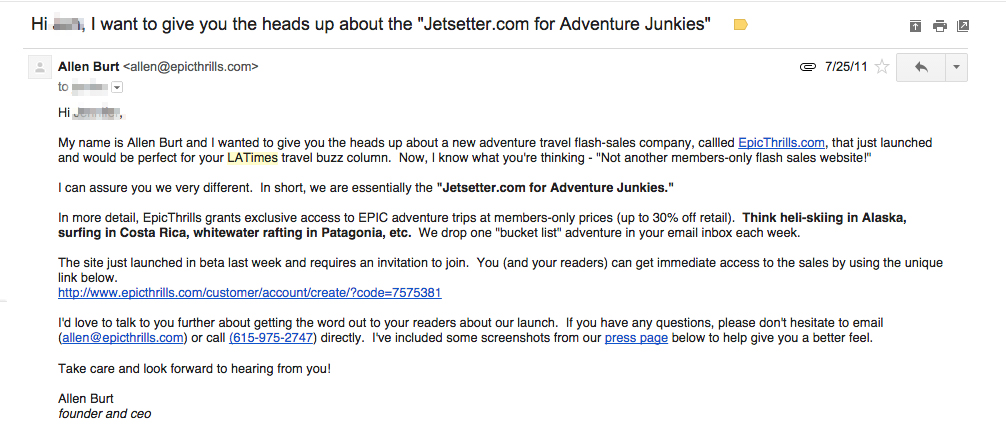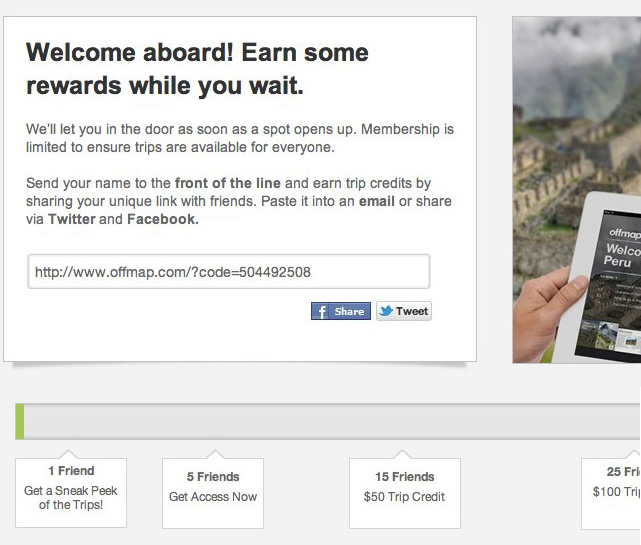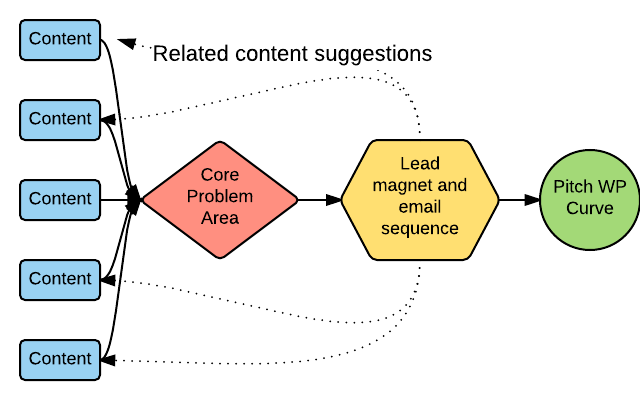3 Important Updates for Your Ecommerce Business Model
Business models exist to capture a company’s overall plan for success. Over the past few years, they have evolved from lengthy documents to more concise presentations, including only the most crucial information.
The downsizing of business models has helped many founders grasp the most important parts of their business, and “cut away” unnecessary channels or metrics that aren’t directly related to growth. You’re probably familiar with the concept of the Lean Canvas – it’s one-page format necessitates founders to focus on the most important things.
But what happens to your business plan once you go from startup online store to a full-blown, scaling ecommerce business? Everything you wrote down surely didn’t go as predicted, did it?
Did all of your channels provide the predicted return on investment?
Was your customer acquisition cost on-point?
In order to make sure that you are constantly aware of the results of your strategy, it is crucial that your ecommerce business plan changes and evolves with your company. I recently published a post about the practice of tracking ecommerce metrics, and how important it is to growing your ecommerce company.
While tracking metrics and making it a goal to consistently update your business plan aren’t exactly easy to do, developing the discipline to do so will guarantee you an awareness of your company that many business owners (surprisingly) don’t have.
If you are ready to commit to updating your business plan on a regular basis, there are a few things you should definitely look at every time.
Let’s take a look at the 3 biggest things a growing ecommerce business owner should re-evaluate when updating his/her business plan:
1. Re-evaluate Your Target Demographic
When I developed my target demographic for my previous startup, Offmap.com, I used the common practice of creating personas that reflected my ideal customer (You can read more about my startup strategy in this blog post on WP Curve). I created a guy named “Steve” who became the focus of my development.

“Steve is a 27 year old young professional who is considers himself an ‘adventure traveler’. He makes over $50,000 a year and takes at least one vacation per year. He typically travels with 1 or 2 good friends, but will also go solo. When asked to choose his top destinations, his answers include places such as Peru, Costa Rica and Argentina (not Florida, Disneyland, or New York City). Steve hates traveling with “tour groups”, and prides himself on discovering hidden gems. While he would love to travel for weeks at a time, Steve typically can only travel for 10 days or less.”
Every one of our marketing messages was written for Steve. Every destination was picked with Steve in mind. I knew his hobbies, his tech preferences, and even the type of coffee he’d bring back for his girlfriend.
Reevaluate your “Steve” to optimize your ecommerce marketingFor the most part, I was spot-on with Steve’s persona. But after about a year and a half, I reevaluated my target demographic because I now had actual data. What I saw was that all purchases coming from my “Steves” were pretty much as predicted. Steve purchased a trip, on average, every 6 months to a more “accessible” destination like Central or South America.
But what I didn’t expect to find is that age was less of a factor than I originally thought it would be. I had customers up into their late 30s, so my demographic ranged from 18 at the youngest, all the way up to 40. Why was this such an important observation for me?
It hammered home the realization that my product was of interest to a much broader age range than I had predicted. I was envisioning marketing to Steve at a very specific life-stage, and assuming he had a steady job and disposable income to spend on adventure. What the actual data said was that there were Steves without a steady income (18 year olds) that were interested in my travel packages. More adventure and independence (versus traditional tour-guided trips) were interesting to Steve, regardless if he had a steady income or not.
Had Offmap actually succeeded, my marketing strategy would have needed to address this observation. In retrospect, it would have been valid to find out where the younger Steves were and market to them just as much as I was the 27-39 year-old Steves. Essentially, Offmap could have been missing out on a huge segment of acquisition because of not re-evaluating exactly who my target demographic was.
A practical way you can re-evaluate your target market is to look at your top-performing blog posts, then compare that with your current Steve.
Is the content your audience is consuming in alignment with all things that define Steve?
If not, you need to re-evaluate your target demo and your marketing strategy both.
This extremely detailed post from Pipetop has a great plan of action for evaluating what your audience is talking about so you can better tailor your strategy to serve your them.

Putting information down in a spreadsheet will really help you re-evaluate who your “ideal” customer is. If you’ve lost sight of your target demographic and are regularly producing content, you may need to re-focus who you are actually speaking to. Develop what we at Blue Stout like to call a “sniff test”, and use that as a marketing rule-of-thumb.
What’s a “sniff test”?
We have a few question bulleted-out that we ask ourselves to be sure our marketing is in check, and producing content high quality topics:
- If I ran [ideal website of large ecommerce brand], would I read this blog post?
- If I ran a startup in the ecommerce space, would I read this blog post?
- Would an “e-commerce CEO influencer” share this blog post?
2. Optimize Your Customer Acquisition Strategy
When you first plan for your startup’s success, it’s ideal to focus on just a couple of channels to acquire customers. As you grow, however, you begin to encounter more options and need to choose carefully how to implement them into your strategy.

For example, athletic apparel startup Outdoor Voices initially acquired customers through their seasonal partnership with J.Crew (who picked up OV as part of an exclusive partnership for Holiday 2014 and Spring 2015). This was a good customer acquisition strategy for the brand in this stage, as they were relatively still unknown. However, from their exposure in the J.Crew stores OV began seeing a rising demand in their product and an increase in online sales.
Obviously, the margins on direct-to-customer sales were more profitable for OV than those made on J.Crew sales. They decided to re-visit their customer acquisition strategy, “paused” their relationship with J.Crew, and funneled more resources into more profitable channels that drove a lower CPA , like their collaboration with popular fashion blogger, Man Repeller. You can read more about their decision here in this case study.
This example is a great illustration of a business plan growing along with a business. J.Crew was an effective channel to get Outdoor Voices “on the map” and allow the product to get in front of the ideal customer. However, once the company began to grow, it made sense to re-evaluate their strategy and invest in channels which can provide a much higher ROI.
3. Re-Evaluate Your Marketing Strategy
When I first laid out my marketing strategy for Offmap, securing some early press to a targeted audience was key. And, I managed to get two articles that successfully drove early traffic to my site and helped me generate my first sales.

I refined my pitch and connected with the LA Times and Wired. Both were accepted. The buzz generated from both publications drove my initial users to sign up for Offmap (which at the time of launch was called Epic Thrills).
Now that I had a user base, it was time to focus on leveraging them as my new marketing platform.

I decided to allow limited access to our travel packages at launch. By doing this, I was able to incentivize early registrants to get instant access by sharing Offmap. If the user was able to share Offmap via social media and get two people to also sign up, they could access our travel packages. Once two of the user’s social connections signed up, I also built some sharing milestones to further incentivize them:
- Sign up 5 friends, get 25% off
- Sign up 10 friends, get 50% off
- Sign up 15 friends, you’re entered to win a free trip (The winner was pulled from a hat each month.)
Both the outreach and the social incentive worked in tandem, and worked well. But as I began to grow, I needed to re-evaluate my marketing strategy and see which channels needed to be cut and which ones should be optimized.
I decided to focus more on creating content, and less on getting more external press. I had validation. I had a user base. I had actual, paying customers. My next thought was to amp up my content marketing strategy.
Sadly, I didn’t get to execute that strategy. I killed my own startup (You can read about it, in full, here).
However, one company that is knocking their content marketing out of the park is WP Curve. They recently released their own content marketing strategy plan for 2016, and it focuses largely on providing high-quality content focused around core problem areas.

Instead of tackling content production as an item to check off your marketing “to-do” list, developing a strategy with great content for your readers that will actually solve their problems will be a better investment in your marketing strategy. It may take more time to polish up a blog post than you’d like, but that means it will actually be more valuable for your customer, so isn’t it worth the extra effort?
Had I been able to fully dive into this type of content marketing with Offmap, I’d have focused on creating content around the core problems that Steve was having and relate it to how my product could solve those problems. Now, I’m currently trying to refine the content strategy here at Blue Stout in creating content to help ecommerce business owners grow their companies and scale effectively. You can get a weekly dose of this content by signing up for our newsletter here.
How Often Do You Update?
Everyone has their own opinion about business models and how often they should be updated. I think that every 6 months (at least) is a good internal benchmark to set. What goals have you used for your business? How often do you think it’s necessary to update your plan?
Let me know in the comments.






